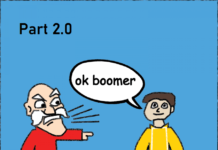The following is a sneak peek into the first few pages from Chapter 3 of my upcoming book on Critical Race Theory. CRT scholarship, like many other fields of the social sciences, is heavily biased and starts from a preconceived notion that racism exists everywhere. As I show in the following piece, social justice researchers deliberately choose to ignore objectivity in their work and instead choose to start from the position that they are active participants in challenging society’s racial norms. It is impossible for them to be objective because CRT is meant to transform contemporary society by working from a pre-existing bias that white supremacy dominates American culture.
Critical Race Theory is as convoluted a theory that has ever been introduced in higher academia. As it is with all theories, it is an idea, an existing bias from which all their research takes place. CRT scholars insist on a world where racism exists all around them, and they conduct their studies with this preconceived notion, putting the ideals of social justice at the forefront of their minds instead of pure scientific objectivity. Even prominent CRT writers admit many of their ideas are assumed and not proven.[1] This assumption is largely based on their own perceptions, and definitions of racism. On one hand, they argue race is a social construct, on the other, that the welfare state is vital for minority communities.[2] This is a perfect example of wanting your cake and eating it too.
The book Critical Race Theory: An Introduction (2017) defines CRT as a means of studying and transforming the relationship between power and race. Like Critical Theory, its purpose is to challenge the traditional foundations of western civilization with the objective of freeing people from all forms of oppression. The existing bias of CRT scholars is that white people are inherently racist and that western nations have used their power to suppress other countries and subjugate their people for the advancement of the white race. When conducting their studies, this is the bias that guides their conclusions.
While in the NSU Social Work Program, my professor, in a statistics class, suggested that fudging the conclusions on race-related surveys was acceptable because most people don’t know how racist they are. As shocking as this sounds, this is true when it comes to social science research across the board. According to an article entitled Bias in Research,[3] researchers tend to neglect their original findings in favor of ones that align with their original hypothesis. Furthermore, Simundic (2013), also argues that scholars, particularly in the social sciences, are more likely to publish findings that support their worldview. In other words, if the study doesn’t show what they wanted, it will either be rejected or the results will be, as my professor so graciously admitted, fudged to reflect their pre-existing bias.
This is important to understand because Delgado and Stephanic (2017) argue that studies consistently show discrimination against minorities in all aspects of our society. They claim blacks and Latinos are less likely to get loans, hold corporate jobs, serve in government or even win an Oscar. How could they possibly be in movies if they are so discriminated against? They even claim that those Black and Brown people who may have been able to break through America’s oppressive, racist norms and achieve some levels of success are still treated as criminals as white people are afraid to get on elevators with them, and women clench their purses tighter in their presence. How ridiculous.
The conclusions of these studies are based on the biases of scholars and the fact that a “commitment to social justice” is one of the basic tenets of Critical Race Theory. This means that a social justice worldview dominates their thinking. They are trained to see things from the perspective of race relations and how they affect power and social status in contemporary American society. Theoretically, it could be argued that this is what is occurring in elementary school. The children have probably never heard the term Critical Race Theory, but the thought reform methods discussed in Chapter 2 are training them to see everything from this tainted perspective.
This may seem a little far-fetched to the average reader. Most people hold that our educational institutions are trustworthy and that lying about research is unethical. There is a disastrous consequence of not being truthful in scientific research which could lead society to false conclusions about the nature of the reality they live in. The idea of racism, and American society being built to protect institutions of white supremacy, dominate educational discourse not because there is an inherent reality to it, but because the research is being done by biased people who look for racism where none exists. To have a “commitment to social justice” as a basic guiding factor of research puts the ideals of a subjective philosophy over any objective findings when it comes to the relationship between race and power.
For instance, the book Research Methods for Social Justice and Equity in Education puts forth the idea that researchers should not start their research from a neutral position, but from one where they are active participants against racism and oppression.[4] Instead of starting their research from the objective position of wanting to go where the data truly leads, they start from the subjective, preconceived notion that racism and oppression exist. Because they are starting from the position of wanting to transform society, it is impossible for them to be objective. The whole purpose of Critical Theory/CRT is social change.
“CRT centers on race research based on a social justice-based praxis that simultaneously aims to illuminate and actively challenge racism and intersecting sects of domination. For example, when studying the educational protests of Black and Brown communities of Chicago against choice of school openings that benefit urban gentrification, a CRT scholar would likely highlight their dual role as both a researcher and participant who actively stands in resistance to oppression, as part of their scholarship, rather than seeing research as necessarily objective and deciding to take a neutral position when studying manifestations of racism.” (Sung & Coleman, 2019)
This is a perfect example of what William Tate meant when he said CRT is not something taught to the undergraduate student. CRT itself is a methodology of research used at the higher levels of academia to frame the research being done in a manner that aligns with the biases of the researchers. The basic presupposition of where CRT starts may be taught to elementary school children, but those lessons are derived from the halls of higher education.
[1] Dixon, A. D., & Rousseau, C. K. (2006). Critical race theory in education: All god’s children got a song. New York: Routledge. D Critical Race Theory in Education – Google Books
[2] Delgado, R. & Stephanic, J. (2017) Critical Race Theory (Third Edition): An Introduction. New York University Press. Critical Race Theory (Third Edition) (degruyter.com)
[3] Simundic, A. (2013) Bias in Research. Biochemia Medica, 23(1) Zagreb University Department of Chemistry. BM 23-1.indd (biochemia-medica.com)
[4] Sung, K. K. & Coleman, N. Framing Critical Race Theory and Methodologies (2019) From Research Methods for Social Justice and Equity in Education. Switzerland, Palgrave Macmillan. 326762924.pdf (core.ac.uk)






















